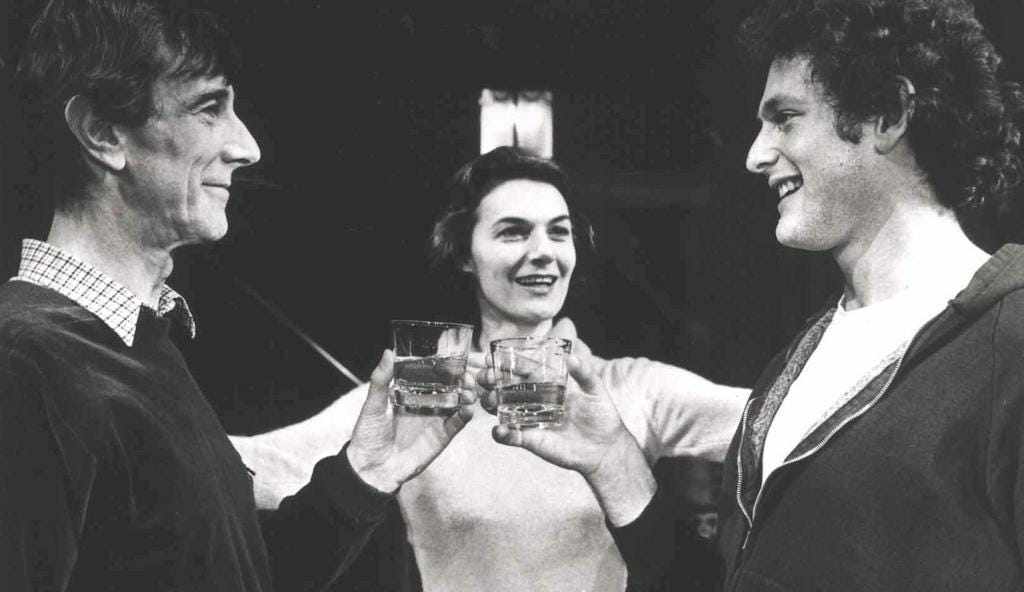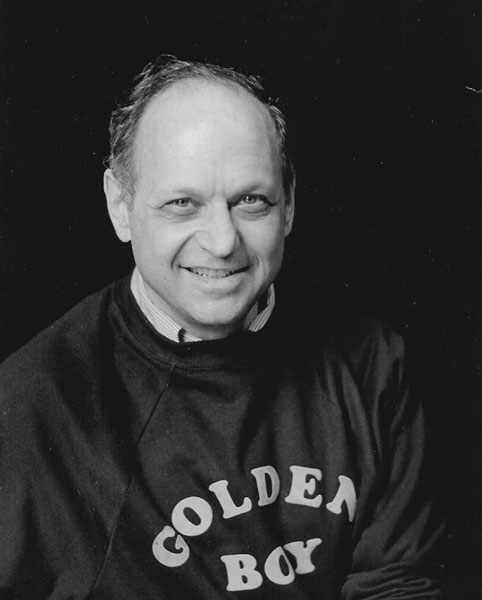
Fifty-two years ago yesterday afternoon, I took my seat as a just-turned twelve-year old in seat F 102 in the last row of the Richard Rodgers Theatre (then called the 46th Street), to see the second-to-last preview of a new musical titled 1776. All I knew about it was from the first ad I saw in the Sunday New York Times, which depicted an eaglet popping out of an egg with an American flag in its mouth. This whimsical cartoon by the artist Fay Gage was all I needed to convince me to mail away for tickets that were discounted to $3.00 during what accounted for less than a week’s worth of previews (the price would go up to $4.50 after it opened). In spite of that bargain, I hesitated, as this would be the first time I would ever see a show before it opened. Would I get my money’s worth? Would it be the same show everyone would see after the opening? I didn’t know… but the savings of a buck-and-a-half was a mighty incentive. And dare I mention that before the pandemic hit, the price for the last row at this very same theatre was $139? And that’s even if you could have gotten a ticket to Hamilton! But what I got for my money on that March 15th afternoon back in 1969 was beyond riches. I fell in love with this wonderful musical and to this day, it holds the record for the one I paid to see more than any other: thirteen times.

I also stood in the wings on countless occasions watching the end of the show. My emboldened teenage self, befriended the stage doorman, and for reasons I will never understand, was allowed backstage countless time throughout the show’s three-year run after my usual Saturday matinees were finished. In those days, plays and musicals weren’t that long (two hours, mostly), which meant that 1776’s running time of 2 hours, 45 minutes made it possible for me to drop in backstage to see its finale whenever I felt like it, especially due to the kindness of this wizened, bespectacled old doorman, who (for all I know) thought I was related to someone in the show. Even if that were true, permission of that sort is unthinkable nowadays. I was one lucky kid.

In my book, Up in the Cheap Seats, I have a chapter devoted to 1776 titled “The Obsession.” Of the thousands of shows I’ve see in my lifetime, it's the one I picked to see over and over again (two others I chose to repeat visits were the original productions of Sweeney Todd and Sunday in the Park with George). Like those Sondheim musicals, I admired the finely crafted a piece of theatre 1776 is, even though it was put together in an unorthodox manner. Originally, songwriter Sherman Edwards had taken on the difficult task of writing it all himself, but when the show’s producer, Stuart Ostrow, demanded Edwards step aside to allow his choice of Peter Stone to rework the book, Edwards had no choice but to capitulate. He had already spent twelve years of his life trying to get it on a stage and he finally had a producer willing to spend money to make his vision a reality, so what else could he do?
1776’s chances for success were minimal. What could be more difficult to overcome than a plot with a predetermined outcome, as you simply KNOW that by July 4th the Declaration of Independence is going to get signed? Yet that is what made Stone’s achievement in creating dramatic tension such a thing to behold. It had its audience believe it was never going to happen before the curtain came down. But when it did, and freedom literally rang throughout the theatre, it created a moment that Stephen Sondheim himself described as “one of the greatest things I ever saw.”
What I love most about the show, is that even though it’s a musical comedy, it tells a dramatic tale. It must never be forgotten that what was going on back in 1776 had never been done before: the breaking away of a country from its parent stem. Yes, this Revolutionary War was just that — an act of revolution. And how Edwards and Stone (along with director Peter Hunt) made it sing was a major achievement.

And since I just mentioned its ending — the sensational tableau that knocked the socks off everyone who saw it — let me share with you the story of how it came about, as it’s a terrific one (and one that for editing purposes, did not make it into my book). And who better to tell it than the guy that came up with it: the show’s director Peter Hunt, with whom I sat for many hours of interviews in 2014, so I could get everything worth soaking up about 1776:
PETER HUNT: We were stuck on the ending. I knew it needed something more and so did my brother Gordon who saw it in New Haven and said, “There’s something about the end. It needs a HA! I just don’t know what that is.”
That stuck in my mind and later when we were out of town in D.C., I was sitting with Stuart Ostrow [the producer] in a coffee shop and I told him I felt we were still missing that final thing. And Stuart thought about it and said, “Well, maybe Sherman was right about that goddamn painting.”
You see, Sherman always wanted a scrim to come in that was the painting, but there are a number of troubles with that. One of which is that it’s not them signing it; it’s an imagined delivery of the document that never happened!
Jo Mielziner, our brilliant set designer, hated that notion with a passion! It was too realistic; there were too many people — but it gnawed at us that a button was out there that we couldn’t put our finger on.
Ostrow became obsessed with figuring this out and started to give in to Sherman’s idea of having the scrim come down so we see the men and go back into history. He shouted to me, “Let’s get Jo Mielziner in here right away.” So he calls his secretary and after a bit Mielziner comes toddling into the coffee shop. And when Stuart told him the plan, I thought poor Jo was going to burst into tears. That is, until he became livid.
Ostrow put his foot down. “We’re putting it in, Jo. Get on it!” So Jo heads off down Pennsylvania Avenue to find a place to get the picture and copy it. And there’s silence at the table between Stuart and me.
“Jo’s really upset.”
“Yeah,” I said.
“And he’s a pretty famous guy, isn’t he?”
“Probably one of the best scenic designers alive.”
“Well, maybe we should think of something else.”
“Uh huh,” I said.
Then there was silence again.
Finally, Stuart asked: “Look, you’ve always wanted to do movies so what would you do if this were a movie?”
And I said, “Well, if it was a movie I would certainly want a really great tight shot of the signatures as the guys start to sign. Because we’ve set up it’s a death warrant and that signing is basically putting their names down on a document that will ultimately destroy them. So I think those signatures — ”
Then I burst out with it. “Wait a minute. Stuart, I have it. I have it!”
He said, “Have what?”
I said, “Look, we bring in a scrim, but instead of the picture, we have the bottom of the Declaration, which is just the signatures. Everybody knows John Hancock and you’ll now see the names of everybody.
And behind the scrim I’ll have the lighting people put in little pin spots that will light their faces — the faces of the men — and the audience will be left with just the document and then the curtain falls. That’s the popper!”
Stuart was overjoyed. “That’s great! Only now we’ve got to get to Jo Mielziner before he kills himself.”
So the two of us race out of the coffee shop (I don’t even think we paid the bill), and ran down Pennsylvania Avenue where we find Mielziner walking extra slow.
We caught up to him and said, “Jo, be of good cheer. Here’s what we’re doing.”
“Oh, that’s brilliant,” Jo said. “We can do this. Now I got to call Pete Feller’s shop and hope they can get it painted by opening night. That’s going to be tricky, all those signatures. You won’t have it here in D.C., and you might not even have it in previews, but we’ll do the best we can.”
So that’s how it was born. We did get it into a preview after spending a whole afternoon tech-ing it, hand-focusing all those little lights on each face. I had electricians crawling along the pipes like monkeys taking these low-voltage lights and focusing them on each of the characters.
It was going so well, but we had to contend with the actors complaining vocally while setting it up. They didn’t understand.
“Why does he have to mess around with this finish? Why do we have to stand here for hours while they’re lighting us?”
Finally, we got it set up to go and we tried it once with Peter Howard [the musical director] in the pit playing the piano.
When all of us out front saw it come together we started cheering and screaming and applauding, patting ourselves on the back and everything, and the cast said, “Can we see it?”
We shouted back, “No! You can’t see it — you’re in it!”
And I heard this to be true, and I believe it to a man, that whenever anybody left the show they came right back the next night to see that moment.

Both William Daniels (John Adams) and Ken Howard (Thomas Jefferson) confirmed Hunt’s story for me. That once having left the show for good, they each went back to see the ending. Being in it, and feeling a part of it, but never being able to see it, forced them to seek out what it looked like — and they were not disappointed. George Hearn, who played John Dickinson on the national tour as well as later in its Broadway run, also returned after departing for good. He told me, “I’m not a super-patriot by any means, but it just killed me. When those bells started ringing it was simply magnificent theatre.”
I couldn’t agree more.
If you enjoy these columns, check out Up in the Cheap Seats: A Historical Memoir of Broadway, available at Amazon.com in hardcover, softcover and e-book. And please feel free to email me with comments or questions at Ron@ronfassler.org.





















Write a comment ...